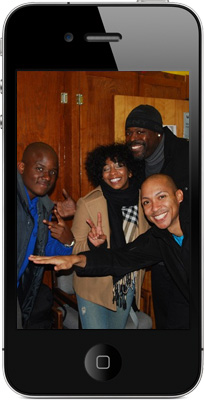 Why isn’t the most dominant individual athlete in the U.S., Serena Williams, allowed to be pretty? Auto racing’s Danica Patrick, tennis’s Maria Sharapova, Eugenie Bouchard and, before them, Anna Kournikova, were allowed to be pretty. Ronda Rousey rose to fame as both muscular and “beautiful.” Serena Williams has been termed fashion forward, angry, competitive, inspirational, strong — but not pretty.
Why isn’t the most dominant individual athlete in the U.S., Serena Williams, allowed to be pretty? Auto racing’s Danica Patrick, tennis’s Maria Sharapova, Eugenie Bouchard and, before them, Anna Kournikova, were allowed to be pretty. Ronda Rousey rose to fame as both muscular and “beautiful.” Serena Williams has been termed fashion forward, angry, competitive, inspirational, strong — but not pretty.
Sinead Kissane recently wrote an op-ed for “The Independent” that posited that Serena sabotaged her battle for equality by posing in a one-piece bathing suit — Kissane labels it “soft porn” — and questions her feminism and her seriousness in a patronizing tone. Kissane, like many in U.S. society, was not similarly critical of the swimsuit spreads Ronda Rousey has done. Those are celebrated as the rise of a tough but feminine athlete (film, talk shows, magazine covers, ESPN Athlete of the Year). The answers to this contradiction lie in U.S perception of Black female imagery. Black women’s’ free choices and feminism are highly subject to implicit bias.
Kissane wrote: When an athlete like Serena goes from acing another Grand Slam to taking her clothes off for a magazine (just because the words ‘Sports’ and ‘Swimsuit’ are in the title, Sports Illustrated swimsuit issue doesn’t make it anything other than soft porn) it shows success doesn’t change some women’s desire to be validated for how they look ... by baring (practically) all in this Swimsuit issue, Serena has loaded importance on her body parts rather than what her body enables her to do as a tennis player.
Really? If Serena feels attractive, why isn’t she allowed to embrace that without the judgment, the body shaming and the association with pornography? Athletes (women and men) have shaped entire second careers around their physicality: Sonja Heine, Johnny Weismuller, Esther Williams, Jim Brown and Dwayne Johnson, to name several. Aly Raisman’s 2016 “Sports Illustrated” swimsuit photo shoot has been met with nothing but fandom. Raisman, who also is muscular, isn’t criticized and told to stay in one lane. This isn’t about Serena letting her gender down and playing to the traditional objectification of women or women in sports. This is about people denying her beauty. The double-standard treatment of other athletes is the giveaway.
Rousey was a media darling whose rise coincided with the 2014-2015 “Serena Slam.” It is ironic that as Serena won her Grand Slam events overlapping two calendar years and also made headlines for approaching Steffi Graf’s 22 Grand Slam victories — she has since surpassed Graf with 23 — Rousey was frequently invited on the late-night entertainment talk shows, graced several magazine covers and appeared in feature films, all because of her physique. Rousey had been a UFC women’s bantamweight champ since March 2012. Known for her quick dispatching of opponents, Rousey became a household name in U.S. sports talk radio discussions. Banter with late-night hosts and ESPN guest segments focused on her appearance, her burgeoning film career and on speculation about how she would fare against male fighters such as boxing’s Floyd Mayweather. Neither hosts nor callers complained, “She’s built like a man.” Rousey was accepted as a powerful athlete who was sexually marketable.
It was said that Rousey’s sexiness transcends athletics. She was in the 2014 film “The Expendables 3” and in 2015’s “Furious 7” and “Entourage,” both established brands. Even before the banner attention she garnered in 2014 and 2015, Rousey posed nude on the cover of ESPN The Magazine’s 2012 Body Issue and a spread within. In May 2013, she was ranked No. 29 by readers on the Maxim Hot 100 of attractive women celebs.
Rousey gained widespread attention and approval from a relatively fringe sport — in the midst of Serena’s continued dominance in her sport. In May 2015, two magazines named Rousey as the most “dominant” active athlete. In September 2015, fans in an online ESPN poll voted her the Best Female Athlete Ever. In November 2015, she became the first woman featured on the cover of “Australian Men’s Fitness.” As big as tennis is in Australia, Serena wasn’t afforded that honor. In 2015, Rousey was the third-most searched person on Google. Rousey was selected Best Female Athlete at the 2015 ESPY’s, during the thick of the “Serena Slam.”
During this time, Serena continued to be the victim of slurs. In 2014, Russian Tennis Federation President Shamil Tarpischev called Venus and Serena Williams “the Williams Brothers.” Serena says when she goes out incognito, she wears long sleeves to cover her muscular arms. She no longer trains with weights.
While the fighting champ was the toast of the media, Williams completed her second “Serena Slam” (winning all four majors in a row but not in a single calendar year) with her 2015 Wimbledon singles victory.
For athletes, particularly women in a sexist culture, being considered “attractive” counts toward one’s bottom line. In Serena’s own sport, she has been overshadowed when it comes to being called a beautiful athlete by media and corporate sponsors. In 2013, Sharapova earned $29 million, $23 million of that from endorsements. That year, Serena earned $20.5 million, $12 million of it from endorsements. Two years later, Sharapova was ranked the No. 4 singles player in the world, Serena was No. 1. Yet, the Russian had twice as many endorsements. Generally, the most successful athletes (Jordan, Woods, Federer, Nadal, Jimmie Johnson, LeBron James) in a sport reap the rewards of the largest advertising bonanza. In June 2016, the International Tennis Federation banned Sharapova for testing positive for meldonium, which increases blood flow in the body. At the time of the ban, Sharapova was the highest-paid woman athlete in history. Since Sharapova has lost to Serena 18 of the 20 times they’ve played one another, the endorsements to Sharapova were obviously an indication of something else.
Well, you might say, Sharapova is a more angular, less-muscular woman than Serena and that is why companies are drawn to her. Venus Williams is a taller, less-curvaceous woman than her sister and she isn’t earning twice what Serena is from being a product spokesperson. Venus Williams earned $11 million last year from endorsements, a third of what Sharapova made. And Sharapova isn’t a better “story,” either. The U.S. loves stories about successful figures who’ve overcome obstacles. The Williams sisters were weaned on public tennis courts in Compton, Calif. Sharapova came to the U.S. from Russia with her father to train with famed tennis guru Nick Bollettieri after showing promise in Moscow.
What distinguishes Serena from other popular women athletes such as Patrick, Raisman and Sharapova is not accomplishment, controversy, the public stature of their respective sports or abilities as a spokesperson. Serena is Black, which carries the historical baggage of being invariably “othered,” hyper-sexualized, masculinized, demonized as “angry” or cast as unappealing to the mainstream. Black women have experienced this objectification — the erotic, the tomboy, “Sapphire” and “not traditionally beautiful” — in incarnations such as Saartije Baartman, the Khoikhoi woman who was exhibited in early 19th-century Europe as “The Venus Hottentot.”
Serena has been tagged with all the aforementioned archetypes, as a surpassing Black woman athlete under the white gaze. The tiara of “America’s Sweetheart,” assumed by figure skaters Peggy Fleming and Dorothy Hamill, as well as gymnast Mary Lou Retton, has never rested on Serena’s head. The white public generally does not identify with Black women in that manner.









More Stories
15 Celebrities Who Graduated from Historically Black Colleges & Universities – EBONY
HBCUs will take center stage at awards show on Black News Channel – The Black Wall Street Times
Racist texts about slaves and ‘picking cotton’ sent to Black people as state AGs, colleges and police probe their origins – CNN